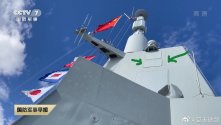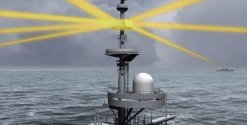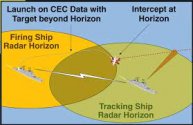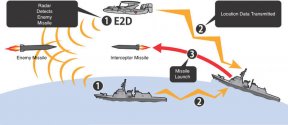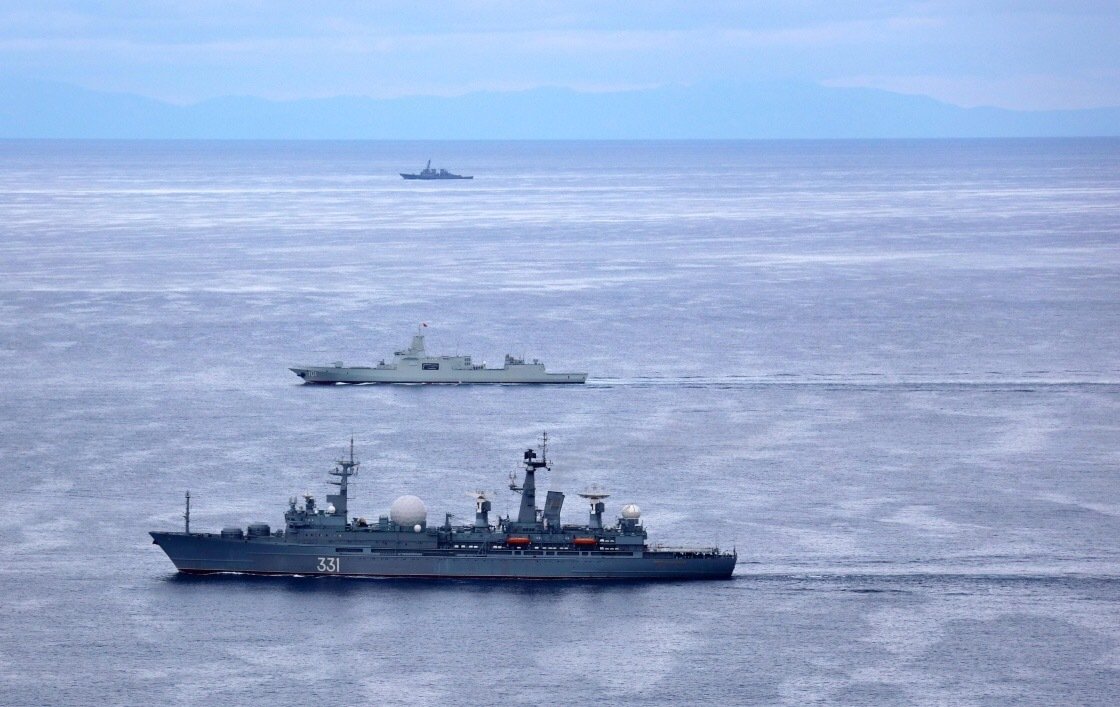Judging by that graphic, data transmitted pertains to location of the target. So the CEC arrays on the ship are passive and they receive that location data?
And as the location changes, new location data is continuously updated to the ship so then ship sends correction data to the missile using regular arrays it would usually use to course-correct the missile.
And if missile gets handed over to another platform (like another ship) then that ship would also need to be receiving data through CEC so once the missile is in the right place for the hand over to happen, that new ship could then start sending course correction to the missile?
One question to ask is the CEC that happens between the 055 connected to another ship like an aircraft carrier. Here you see the Shandong, which has these panels as indicated by the green pointer. 003 has eight of these on its crown mast.
The Shandong has the advantage over the 055 because its radars are located so high, they have a much greater radar horizon than what's possible on the 055 or on any destroyer in the planet. In addition to the Type 346 radar panels, the Type 364 radar is even higher---note the bulb radome between the two 346A panels, which there are two on each sides of the island. To top it all, there is still the Type 382 radar right there are the very top.
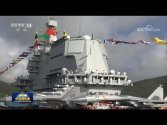
So the theoretical question and situation is this---
You have the Shandong on the center of the battle group and a 055 far at the port side. Antiship missiles are coming in low at the starboard side. They are far too low for any of the 055's radars to detect them because of the limitations of the radar horizon with the 055's radar heights, both the main S-band radar and the secondary X-band radar. However, the Shandong's radars, with the Type 382 Sea Eagle spotting these missiles first, followed by the Type 364 Sea Gulls and Type 346A Dragons Eye. By the time the 364 and 346 radars are able to scan and track the targets, these radars could obtain a weapons quality track of the targets. The IFF bars on the Shandong completes friend and foe interrogation and concludes the targets are foes.
Using CEC, the Shandong would already be streaming data to the 055, as the targets are tracked by the Type 382, then 364 and 346 radars. The targets are still beyond the radar horizon of the 055's own radars, but high quality tracks of the targets are confirmed and so the HHQ-9s are launched off from the 055, which then arcs over the Shandong as they head towards their targets. At this point the HHQ-9s are connected by datalink to the 055 which is updating them from the data provided by the Shandong.
As the HHQ-9s go further and towards below the datalink radio horizon of the 055, so the question what comes next? Two possibilities. The first is that the HHQ-9 active radar seekers go active and will seek to destroy the targets autonomously. The second is that the Shandong also has its datalink, in which case the 055 hands over the HHQ-9s to the Shandong. Using the Shandong's datalinks --- the HHQ-9 datalink I believe is embedded within the Type 346 array, probably at the corners --- the HHQ-9 completes the handover and is continually updated by the Shandong. With the Shandong's radar height to be much greater, the Shandong's datalink line of sight to the HHQ-9 will be much greater in terms of radio horizon, allowing the HHQ-9 to travel further and closer to the target before turning its active radar seeker on and going terminal.
How far can each of these ships be? Just as long as the cooperative ships are within the line of sight and radio horizon of these panels, which is why these panels have to be located at a high point in the ship. The communicating distance between the Shandong to a 055 is going to be greater than a 055 to another 055.
